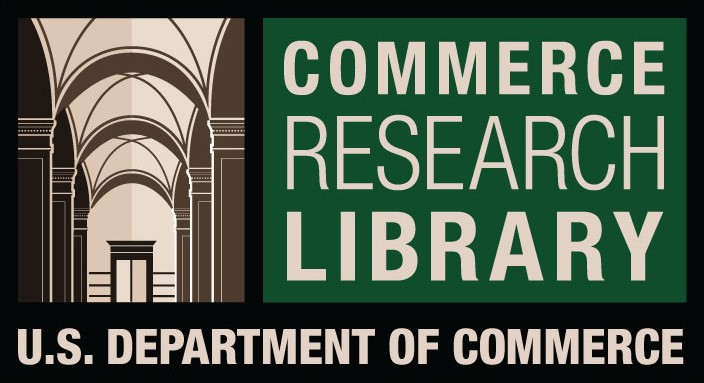THE RATIONAL AND IRRATIONAL DIALECTIC IN THE THEORY OF PLANNED BEHAVIOR WITH MODERATING EFFECT OF COGNITIVE BIAS
DOI:
https://doi.org/10.61841/av2h9236Keywords:
Cognitive Bias, Rational Model, Irrationality, CosmeticsAbstract
A standard economic model (i.e., Theory of Planned Behavior) is based largely on logical cognition (Ajzen & Fishbein ,1991). As a result, it is known for the rational component in the theory predominates in influencing the dependent variable that is intention; meaning that, TPB largely ignores the role of irrational influences in decision making. However, in reality, an individual decision is based on both rational and irrational forces (Micklitz et al., 2011; Mullainathan & Thaler, 2000). The study, being explorative, include Cognitive Bias as a moderator to predict female consumers purchase intention towards cosmetic products choice paradox. Hence, to the extent that it can incorporate the measurement of irrational variation, this study postulates that TPB can be improved as a model of behavioural intention. A self-administered questionnaire was employed to gather data from 380 consumers via purposive sampling and subsequently analysed using Partial Least Squares–Structural Equation Modeling (PLS-SEM). This study attempts to investigate if Cognitive Bias which is known as an irrational factor moderates, that is, either improves or reduces purchase decision of consumers due to the causal effects of Behavioral Beliefs and Attitude. As a result, it has been found that people's decision making is heavily influenced by the framing of the problem which is known as Cognitive Bias (van Schie & van der Pligt, 1995; Elliot & Archibald, 1989; Tversky & Kahneman, 1981); thus, Cognitive Bias violates Expected Utility Theory.
Downloads
References
1. Ajzen, I. (1991). The theory of planned behavior. Organizational Behavior and Human Decision Processes, 50(2), 179.
2. Ajzen, I. (2011). The theory of planned behaviour: reactions and reflections: Taylor & Francis.
3. Becker, G. S. (1962). Irrational behavior and economic theory. Journal of political economy, 70(1), 1- 13.
4. Bettman, J. R., Luce, M. F., & Payne, J. W. (1998). Constructive consumer choice processes. Journal of Consumer Research, 25(3), 187-217.
5. Bitta, A. D., & Loudon, D. (2003). Consumer Behavior.
6. Bonner, S. E. (2008). Judgment and decision making in accounting. Prentice Hall.
7. Blackwell, R. D., Paul, W. M., & James, F. E. (2006). „Attributes of Attitudes. Consumer Behavior, 235-243.
8. Bray, J. P. (2008). Consumer behaviour theory: approaches and models.
9. Brown, A., Furnham, A., Glanville, L., & Swami, V. (2007). Factors that affect the likelihood of undergoing cosmetic surgery. Aesthetic Surgery Journal, 27(5), 501-508.
10. Chan, R. Y., & Lau, L. B. (2002). Explaining green purchasing behavior: A cross-cultural study on American and Chinese consumers. Journal of international consumer marketing, 14(2-3), 9-40.
11. Cohen, J. (1988). Statistical Power Analysis for the Behavioral Sciences (2nd ed.). Hillsdale, New Jersey: Lawrence Erlbaum Associates.
12. Conner, M., Godin, G., Sheeran, P., & Germain, M. (2013). Some feelings are more important: Cognitive attitudes, affective attitudes, anticipated affect, and blood donation. Health Psychology, 32(3), 264.
13. Dougherty, M. R., Gettys, C. F., & Ogden, E. E. (1999). MINERVA-DM: A memory processes model for judgments of likelihood. Psychological Review, 106(1), 180.
14. Dean, R. N., Farrell, J. M., Kelley, M. L., Taylor, M. J., & Rhodes, R. E. (2007). Testing the efficacy of the theory of planned behavior to explain strength training in older adults. Journal of Aging and Physical Activity, 15(1), 1-12.
15. Dulany Jr, D. E. (1962). The place of hypotheses and intentions: an analysis of verbal control in verbal conditioning 1. Journal of Personality, 30(3), 102-129.
16. Elliott, C. S., & Archibald, R. B. (1989). Subjective framing and attitudes towards risk. Journal of Economic Psychology, 10(3), 321-328.
17. Ellis, A. (1976). The rational-emotive view. Journal of Contemporary Psychotherapy, 8(1), 20-28.
18. Erasmus, A. C., Boshoff, E., & Rousseau, G. (2001). Consumer decision-making models within the discipline of consumer science: a critical approach. Journal of Consumer Sciences, 29(1).
19. Esposito, G., van Bavel, R., Baranowski, T., & Duch-Brown, N. (2016). Applying the Model of Goal- Directed Behavior, Including Descriptive Norms, to Physical Activity Intentions: A Contribution to Improving the Theory of Planned Behavior. [Article]. Psychological Reports, 119(1), 5-26. doi: 10.1177/0033294116649576.
20. Falk, A., Fehr, E., & Fischbacher, U. (2008). Testing theories of fairness—Intentions matter. Games and Economic Behavior, 62(1), 287-303.
21. Fishbein, M., & Ajzen, I. (1975). Belief, attitude, intention and behavior: An introduction to theory and research.
22. Gigerenzer, G., & Gaissmaier, W. (2011). Heuristic decision making. Annual review of psychology, 62, 451-482.
23. Hair, J. F., Black, W. C., Babin, B. J., Anderson, R. E., & Tatham, R. L. (2010). Multivariate Data Analysis. Prentice Hall.
24. Hair, J. F. J., Hult, G. T. M., Ringle, C., & Sarstedt, M. (2014). A Primer on Partial Least Squares Structural Equation Modeling (PLS-SEM). Long Range Planning (Vol. 46). Thousand Oaks, California: Sage Publications, Inc. doi:10.1016/j.lrp.2013.01.002
25. Hanson, J. D., & Kysar, D. A. (1999). Taking behavioralism seriously: The problem of market manipulation. NYUL Rev., 74, 630.
26. Havlena, W. J., & Holbrook, M. B. (1986). The varieties of consumption experience: comparing two typologies of emotion in consumer behavior. Journal of Consumer Research, 13(3), 394-404.
27. Herrmann, J. W. (2015). Engineering decision making and risk management: John Wiley & Sons.
28. Herrmann, A., Heitmann, M., Morgan, R., Henneberg, S. C., & Landwehr, J. (2009). Consumer decision making and variety of offerings: The effect of attribute alignability. Psychology & Marketing, 26(4), 333-358.
29. Ho, T. H., Lim, N., & Camerer, C. F. (2006). How “psychological” should economic and marketing models be? Journal of Marketing Research, 43(3), 341-344.
30. Huber, O. (2012). Risky decisions: Active risk management. Current Directions in Psychological Science, 21(1), 26-30.
31. Huffman, C., & Kahn, B. E. (1998). Variety for sale: Mass customization or mass confusion? Journal of retailing, 74(4), 491-513.
32. Johnson, P. (2006). Business Models Astute Competition (pp. 53-72): Emerald Group Publishing Limited.
33. Kahneman, D. (2011). Thinking, fast and slow: Macmillan.
34. Kahneman, D., & Tversky, A. (1972). Subjective probability: A judgment of representativeness The concept of probability in psychological experiments (pp. 25-48): Springer.
35. Kahneman, D., Slovic, P., & Tversky, A. (1982). Judgments under uncertainty. Heuristics and Biases, Cambridge.
36. Kahneman, D., & Tversky, A. (1979). Prospect theory: An analysis of decision under risk. Econometrics, 47, 263-291. Recuperado de http://www. jstor. org/pss/1914185.
37. Kalafatis, S. P., Pollard, M., East, R., & Tsogas, M. H. (1999). Green marketing and Ajzen’s theory of planned behaviour: a cross-market examination. Journal of consumer marketing, 16(5), 441-460.
38. Kaplan, B. A., Reed, D. D., & Jarmolowicz, D. P. (2016). Effects of episodic future thinking on discounting: Personalized age‐progressed pictures improve risky long‐term health decisions. Journal of applied behavior analysis, 49(1), 148-169.
39. Khan, S. (2012). Factors Responsible for Making Consumer Attitude towards Islamic Banking: A Study of Islamic Banks Accountholders of Peshawar Region Pakistan. Arabian Journal of Business and Management Review (OMAN Chapter), 2(1), 136.
40. Kotler, P. (2000), Marketing Management, Prentice-Hall, Englewood Cliffs, NJ
41. Kumar, A. A., & Babu, S. (2014). Factors influencing consumer buying behavior with special reference to dairy products in Pondicherry state. J. Res. Manage. Technol, 65, 65-73.
42. Langley, A., Mintzberg, H., Pitcher, P., Posada, E., & Saint-Macary, J. (1995). Opening up decision making: The view from the black stool. organization Science, 6(3), 260-279.
43. Mick, D. G., Broniarczyk, S. M., & Haidt, J. (2004). Choose, choose, choose, choose, choose, choose, choose: Emerging and prospective research on the deleterious effects of living in consumer hyperchoice. Journal of Business Ethics, 52(2), 207-211.
44. Micklitz, H.-W., Reisch, L. A., & Hagen, K. (2011). An introduction to the special issue on “behavioural economics, consumer policy, and consumer law”. Journal of Consumer Policy, 34(3), 271-276.
45. Mullainathan, S., & Thaler, R. H. (2000). Behavioral economics: National Bureau of Economic Research.
46. Nicholls, A., & Lee, N. (2006). Purchase decision‐making in fair trade and the ethical purchase ‘gap’:‘is there a fair trade twix?’. Journal of Strategic Marketing, 14(4), 369-386.
47. Norman, D. A. (2004). Emotional design: Why we love (or hate) everyday things: Basic Civitas Books.
48. O’Shaughnessy, J., & Jackson O’Shaughnessy, N. (2002). Marketing, the consumer society and hedonism. European Journal of Marketing, 36(5/6), 524-547.
49. Perner, L., (2010). Consumer behavior: the psychology of marketing. Retrieved July 2, 2017.
50. Pitts-Taylor, V. (2007). Surgery junkies: Wellness and pathology in cosmetic culture. Rutgers University Press.
51. Prelec, D. (2006). Rebuilding the boat while staying afloat: The modeling challenge for behavioral economics. Journal of Marketing Research, 43(3), 332-336.
52. Prestwich, A., Perugini, M., & Hurling, R. (2008). Goal desires moderate intention‐behaviour relations. British Journal of Social Psychology, 47(1), 49-71.
53. Radke, S., Güroğlu, B., & de Bruijn, E. R. (2012). There's something about a fair split: intentionality moderates context-based fairness considerations in social decision-making. PLoS One, 7(2), e31491.
54. Sarwer, D. B., Wadden, T. A., Pertschuk, M. J., & Whitaker, L. A. (1998). The psychology of cosmetic surgery: A review and reconceptualization. Clinical psychology review, 18(1), 1-22.
55. Schlenker, B. R. (1982). Translating Actions into Attitudes: An Identity-Analytic Approach to the Explanation of Social Conduct1. In Advances in experimental social psychology (Vol. 15, pp. 193-247). Academic Press.
56. Schwartz, B. (2004). The paradox of choice: Why more is less.
57. Sekaran, U., & Bougie, R. (2013). Research Methods for Business. In Research methods for business (p. 436).
58. Shah, A. K., & Oppenheimer, D. M. (2008). Heuristics made easy: An effort-reduction framework. Psychological bulletin, 134(2), 207.
59. Sheeran, P., Gollwitzer, P. M., & Bargh, J. A. (2013). Nonconscious processes and health. Health Psychology, 32(5), 460.
60. Sheng, H., & Joginapelly, T. (2012). Effects of web atmospheric cues on users’ emotional responses in e-commerce. AIS Transactions on Human-Computer Interaction, 4(1), 1-24.
61. Sinha, P. K. (2003). Shopping orientation in the evolving Indian market. Vikalpa, 28(2), 13-22.
62. Sniehotta, F. (2009). An experimental test of the theory of planned behavior. Applied Psychology: Health and Well‐Being, 1(2), 257-270.
63. Sood, A., Quintal, V., & Phau, I. (2017). Keeping Up With the Kardashians: Consumers' Intention to
Engage in Cosmetic Surgery. Journal of Promotion Management, 1-22. doi: 10.1080/10496491.2016.1267677.
64. Sproule, S., & Archer, N. (2000). A buyer behaviour framework for the development and design of software agents in e-commerce. Internet research, 10(5), 396-405.
65. Stojanović, B. (2013). Daniel Kahneman: The riddle of thinking: Thinking, fast and slow, Penguin books, London, 2012. Panoeconomicus, 60(4), 569-576.
66. Toth, F. (2013). The choice of healthcare models: How much does politics matter? International Political Science Review, 34(2), 159-172.
67. Tversky, A., & Kahneman, D. (1974). Judgment under uncertainty: Heuristics and biases. Science, 185(4157), 1124-1131.
68. Tversky, A., & Kahneman, D. (1981). The framing of decisions and the psychology of choice. Science, 211(4481), 453-458.
69. Tversky, A., & Kahneman, D. (1986). Rational choice and the framing of decisions. Journal of business, S251-S278.
70. Van Schie, E. C., & Van Der Pligt, J. (1995). Influencing risk preference in decision making: The effects of framing and salience. Organizational Behavior and Human Decision Processes, 63(3), 264-275.
71. Verbeke, W., & Vackier, I. (2005). Individual determinants of fish consumption: application of the theory of planned behaviour. Appetite, 44(1), 67-82.
72. Venkatesh, V., Morris, M. G., Davis, G. B., & Davis, F. D. (2003). User acceptance of information technology: Toward a unified view. MIS quarterly, 425-478.
73. Vincent‐Wayne, M., & Vassilios, P. (1999). Marketing causes and implications of consumer confusion. Journal of Product & Brand Management, 8(4), 319-342. doi: doi:10.1108/10610429910284300
74. Witte, E., Joost, N., & Thimm, A. L. (1972). Field research on complex decision-making processes-the phase theorem. International Studies of Management & Organization, 2(2), 156-182.
75. Wu, P.-T., & Lee, C.-J. (2016). Impulse buying behaviour in cosmetics marketing activities. Total Quality Management & Business Excellence, 27(9-10), 1091-1111. doi: 10.1080/14783363.2015.1060851
76. Yeon Kim, H., & Chung, J.-E. (2011). Consumer purchase intention for organic personal care products. Journal of Consumer Marketing, 28(1), 40-47.
77. Young, L., & Saxe, R. (2011). When ignorance is no excuse: Different roles for intent across moral domains. Cognition, 120(2), 202-214.
78. Young, L., Cushman, F., Hauser, M., & Saxe, R. (2007). The neural basis of the interaction between theory of mind and moral judgment. Proceedings of the National Academy of Sciences, 104(20), 8235- 8240.
79. Zhang, H., Fu, X., Cai, L. A., & Lu, L. (2014). Destination image and tourist loyalty: A meta-analysis. Tourism Management, 40, 213-223.
Published
Issue
Section
License

This work is licensed under a Creative Commons Attribution 4.0 International License.
You are free to:
- Share — copy and redistribute the material in any medium or format for any purpose, even commercially.
- Adapt — remix, transform, and build upon the material for any purpose, even commercially.
- The licensor cannot revoke these freedoms as long as you follow the license terms.
Under the following terms:
- Attribution — You must give appropriate credit , provide a link to the license, and indicate if changes were made . You may do so in any reasonable manner, but not in any way that suggests the licensor endorses you or your use.
- No additional restrictions — You may not apply legal terms or technological measures that legally restrict others from doing anything the license permits.
Notices:
You do not have to comply with the license for elements of the material in the public domain or where your use is permitted by an applicable exception or limitation .
No warranties are given. The license may not give you all of the permissions necessary for your intended use. For example, other rights such as publicity, privacy, or moral rights may limit how you use the material.









